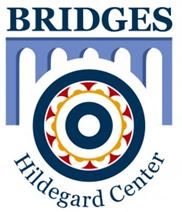“Rhythm in Layers” Low-Relief Sculpture with Design in Mind
“Rhythm in Layers” Low-Relief Sculpture with Design in Mind
Special thanks to Dick Blick for giving Hildegard Center permission to provide a link to for lesson. In addition to offering quality art supplies at a great value, Dick Blick (www.dickblick.com) also provides wonderful project ideas created for all ages and skill levels. Every project also meets National Standards for Visual Arts Education.
Layer by layer, piece by piece, students assemble a three-dimensional collage using simple pre-cut wood and cardboard shapes built up from a base. Because the design exists on multiple levels rather than a single plane, the relationship of each individual element to the whole must be considered. This lesson can be used to illustrate the following design principles:
Rhythm – repetition and placement of similar colors, shapes and lines throughout the collage will provide a sense of order and unity.
Balance – whether placed symmetrically or asymmetrically, collage materials should be arranged so that the visual weight is evenly distributed.
Movement – connecting shapes, lines and colors should lead the viewer on a path into, out of and around the entire piece.
Grade Levels 3-12
Note: Instructions and materials are based on a class of 25 students. Adjust as needed.
Preparation
1. Using a paper trimmer, cut the chipboard to make bases for each collage. The sheets cut evenly to a 5-1/2" x 7" size, but any size may be used. Cut the remaining chipboard into squares and rectangles of assorted sizes and shapes.
Materials
- Assorted Wood Shapes including:
- Wood Shapes, assortment; share across classroom
- Woodsies® Sticks; share one 75-piece package among six students
- Wooden Dowel Rods, 1/4" x 12"; share one 12-piece package among four students
- More options:
- Craftsticks
- Craft Picks 3/4” Wooden Blocks
- All-Purpose Chipboard, 22" x 28", 14-ply; share one sheet among six students
- Studio Artists’ Colored Pencils, assorted colors; need approximately 12 per student
- Studio Art Markers, assorted colors; need approximately 12 per student
- Carpenter’s Wood Glue: one per student
Process
1. Using a broad-tip marker, cover the chipboard base with a dark color on one side.
2. Color each individual chipboard or wood element, using markers and colored pencils. Attach them to the base with small amounts of glue. Some hints to keep in mind for a pleasing design:
a) Build rhythm within the design by repeating colors, shapes and patterns. Whenever you lay down one shape or a series of shapes, repeat it somewhere else within the artwork. It doesn't need to be symetrical, just repetitious.
b) Build depth within the design by placing darker colors in the background, then building each layer up with sequentially lighter colors. Save the most brilliant colors for the top shapes, which will function as focal points. Use large shapes in the background and smaller ones as the collage builds up. This keeps the design open so layers remain visible.
c) Build interest into the design by using a variety of shapes, colors and patterns. Once again, remember to repeat in order to form rhythm!
d) Add movement by connecting large pieces with lines formed by sticks and dowels.
e) Glue small, stacked wood shapes beneath larger elements to act as risers.
f) Design beyond the edges of the base — as far beyond as you can!
3. To display on the wall, use a Cloth Picture Hanger or other hanging components mounted to the back.
Options:
1. Younger ages may wish to use washable markers. We recommend using a large color selection, such as Crayola® Pip-SqueaksTM Skinnies, set of 64.
2. For a quick version of this project, use ready-made shapes of WonderFoam® instead of wood shapes (see example above). A 750-piece package of assorted color WonderFoam® contains ovals, squares, circles, etc. Glue to wood dowels and cardboard pieces with Tacky Glue.
National Standards for Visual Arts Education
Content Standard #1 — Understanding and applying media, techniques and processes
K-4 Students describe how different materials, techniques and processes cause different responses
5-8 Students select media, techniques and processes; analyze what makes them effective or not effective in communicating ideas; and reflect upon the effectiveness of their choices
9-12 Students conceive and create works of visual art that demonstrate an understanding of how the communication of their ideas relates to the media, techniques and processes they use
Content Standard #2 — Using knowledge of structures and functions
K-4 Students use visual structures and functions of art to communicate ideas
5-8 Students select and use the qualities of structures and functions of art to improve communication of their ideas
9-12 Students create artworks that use organizational principles and functions to solve specific visual arts problems
